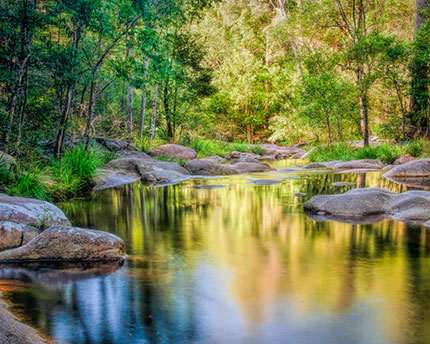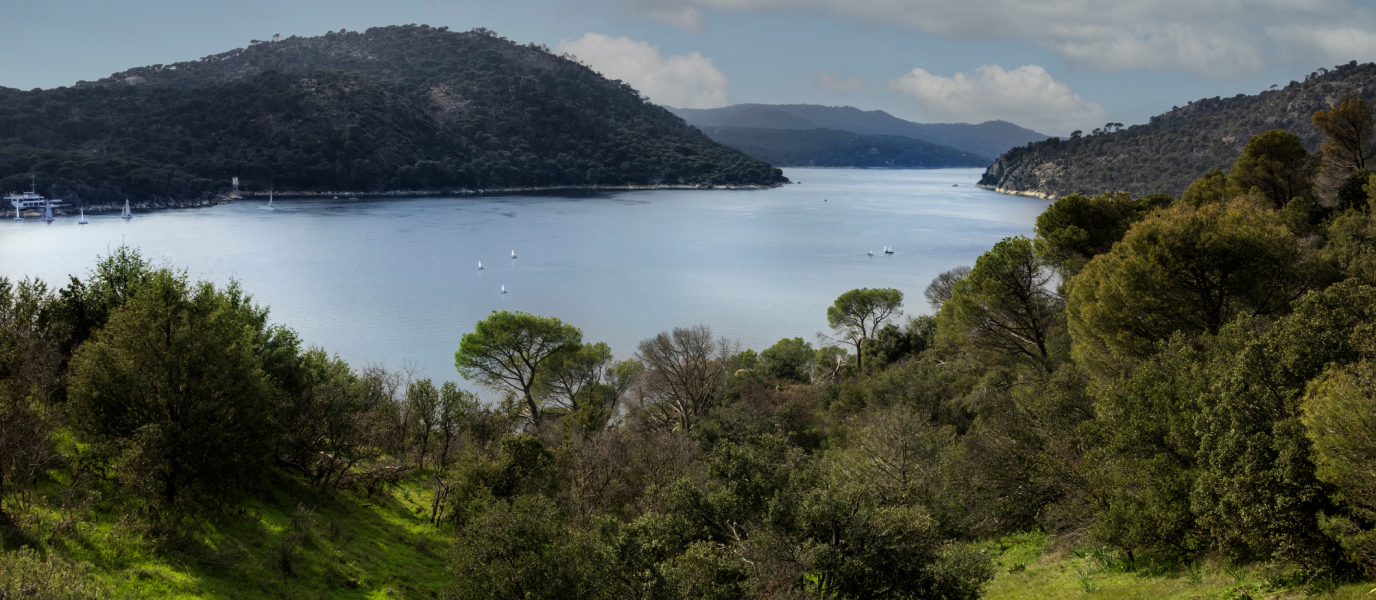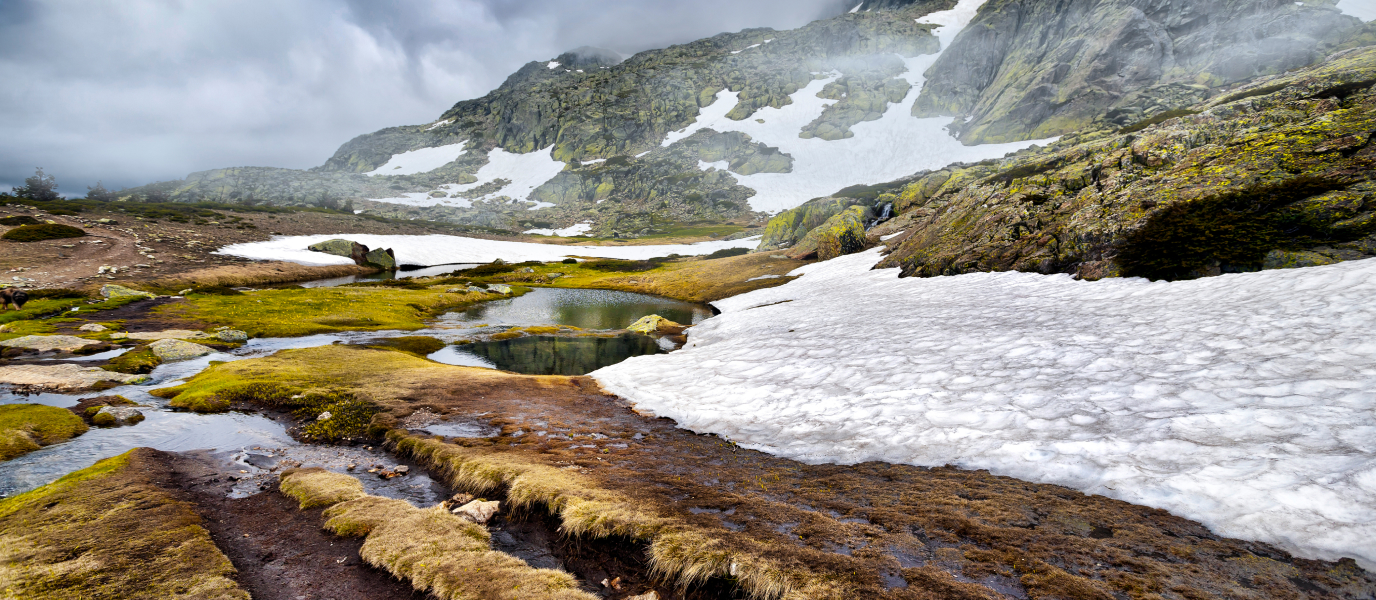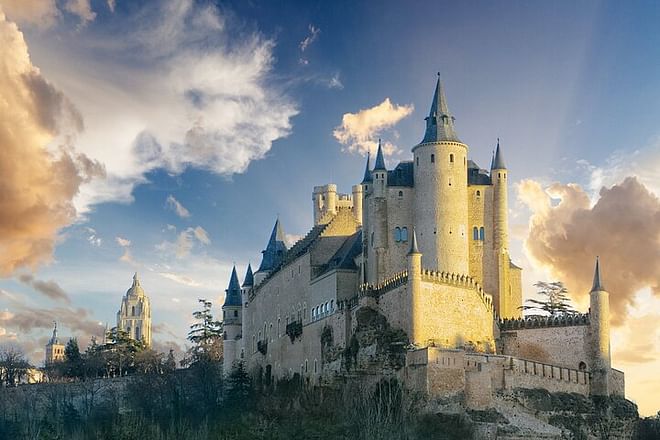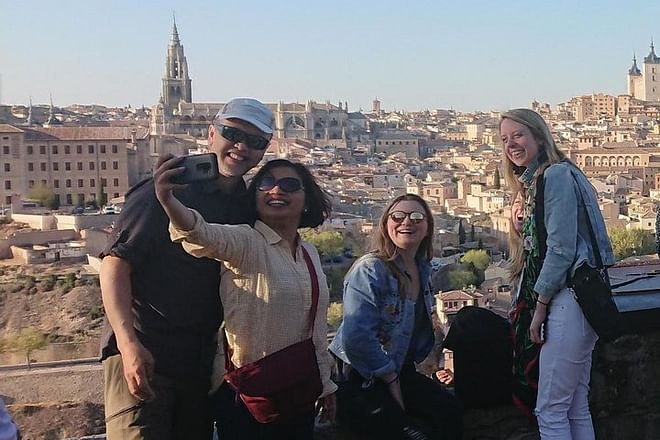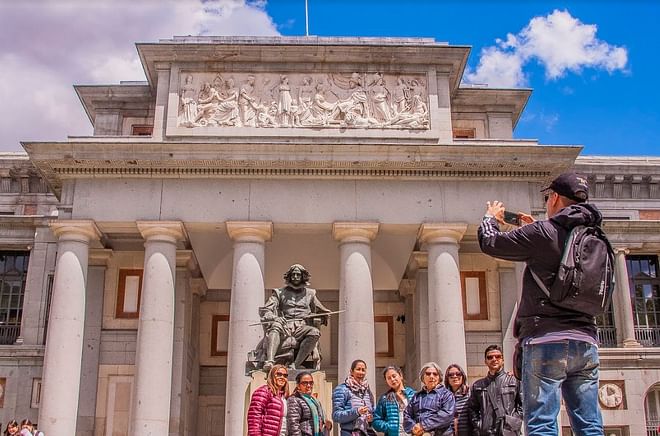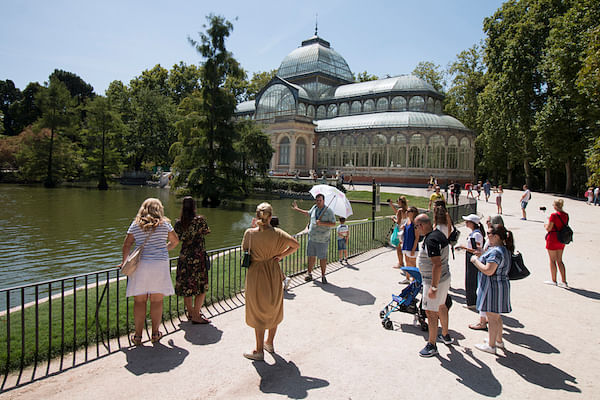El Capricho Park is considered one of the most beautiful green spaces in Madrid. It spans no less than 14 hectares and boasts unique and historical spaces that dazzle those who come to visit. The park is steeped in charm and history, owing its existence to the ‘whims’ (the meaning of ‘capricho’) of the Dukes of Osuna, who ordered for the gardens to be built next to their palace in 1787.
Primarily inspired by an English garden, El Capricho Park was so magnificent that it apparently inspired envy in Queen María Luisa herself. It is said that she went pale when she saw the Las Tencas pond with its swans and ducks and its natural labyrinth, all designed by Antonio López Aguado and his son Martín. The dukes were such fans of painting, music, theatre and literature that they often organised musical soirees, social gatherings and cultural events, taking advantage of the charming setting: their ‘very own Versailles’ as the duchess once said. The estate also boasted the residential palace, which adjoins Plaza de los Emperadores, a hermitage, an iron bridge—one of the first of its kind in Spain—and a dancehall, the Casino de Baile.
El Capricho Park: just 9.5 kilometres from Puerta del Sol
The gardens of El Capricho Park, just 9.5 kilometres from Puerta del Sol, are situated on Avenida de Logroño, a thoroughfare that separates the park from another magnificent green space: Juan Carlos I Park.
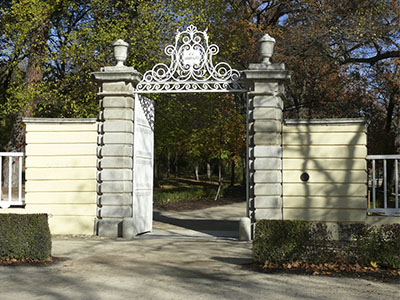
The history of El Capricho Park is long and fascinating: the estate was seized by French troops during the invasion of Spain in the early nineteenth century. It was also the Headquarters of Madrid’s Defence during the Spanish Civil War. It later changed hands various times before it was declared a National Artistic Garden in 1943. Finally, in 1974 it was acquired by Madrid City Council.
Among buildings and avenues
Although it was once surrounded by olive groves, today El Capricho Park is an urban garden neighbouring the Alameda de Osuna neighbourhood in the Barajas district. Surrounded by buildings and avenues, the park is crossed—from east to west—by a pretty promenade. The rest of it is peppered with pleasant paths lined with an array of trees and plants.
The park is home to many historical places of interest: the first constructions that you will come across when you enter are the Casa de la Vieja, the Munitions Store and the Casino de Baile.
The Casino de Baile
The Casino de Baile is formed of a square ground level and an octagonal upper level with reliefs representing the four seasons. The building is accessed via its two stairways, in the middle of which is a type of grotto with a large wild boar sculpture in the middle.
From the Casino de Baile begins ‘La Ría’—or ‘The Inlet’—a navigable artificial canal that stretches for just half a kilometre. If you follow its course, you’ll soon come to a pond with an island in the middle and a monument dedicated to the III Duke of Osuna, Virrey de Nápoles. Not far from that is the hermitage and the jetty, also known as the Casa de Cañas, situated close to an avant-garde iron bridge.
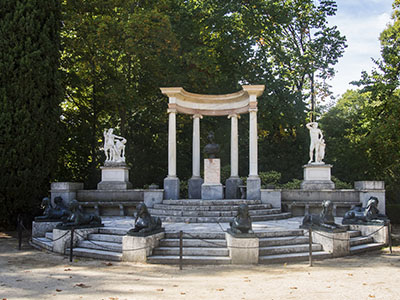
Ponds, squares, columns and a bunker
If you keep on going you will come to an area known as The Battery, a brick construction similar to a small fort. It was apparently designed as a games area, as there is a drinking-water fountain and large lawns in its surroundings. Afterwards you’ll come to the Casa del Artillero, also known as the Casa en Ruinas—or the Ruined House. Soon after you’ll come to a small square with a tall column atop of which appears Saturn devouring his son.
The Las Tencas pond is not far from the rotunda and a good landmark to help you find your way to El Abejero, an interesting old building designed for bee watching. From here we start to approach the palace area, but before doing so, you’ll first see an underground bunker that, according to historians, was used by general Miaja during the Spanish Civil War. You will also find a stunning columned gazebo dedicated to the god Bacchus.
From El Capricho Park to the Museo del Prado
Before eventually reaching the stairway that leads to what was once the residence of the Dukes of Osuna, you will come to the Exedra of Plaza de los Emperadores. A great monument consisting of a bronze bust of the duchess surrounded by sphinxes with the heads of women and the bodies of lions. Leading on from here is a beautiful fountain known as Los Delfines. On the way to the palace, you’ll encounter the Romantic Duellists’ Parterre, also called Plaza de los Cipreses. Here stand two marble columns representing the duellists, alongside the famous Jardín de las Ranas, named after the frog motifs that adorn its main fountain.
Such was the Dukes of Osuna’s interest in art that they had a library in their palace housing over 60,000 books. They also owned an art collection with numerous works by Goya, in addition to one-of-a-kind paintings by Rubens, Van Dick, Rafael, Giordano and Lucas Jordán, among others. A collection that today is dispersed among various museums, particularly El Prado.
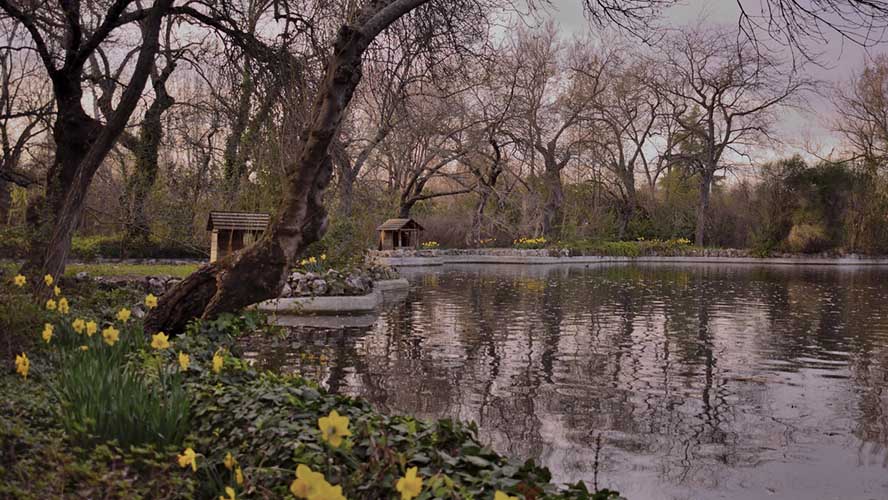
The palace of the Dukes of Osuna was built on the site of the original house of the Count of Priego in 1783 and the initial construction phase lasted until 1796. According to records from the National Historical Archive, in 1787, the properties of the Dukes of Osuna spanned practically all of the district of Barajas. No less than 1,680 pear trees, 536 apple trees, 485 plum trees, 810 vines, 133 orange trees and 270 almond trees, in addition to a vast number of ornamental trees such as black poplar, willows, acacia, tilias and pomegranate trees, were recorded on their land. In total, almost 6,000 tree specimens, which nourish the numerous birds that still seek refuge in what remains of this vast and idyllic property.





































































